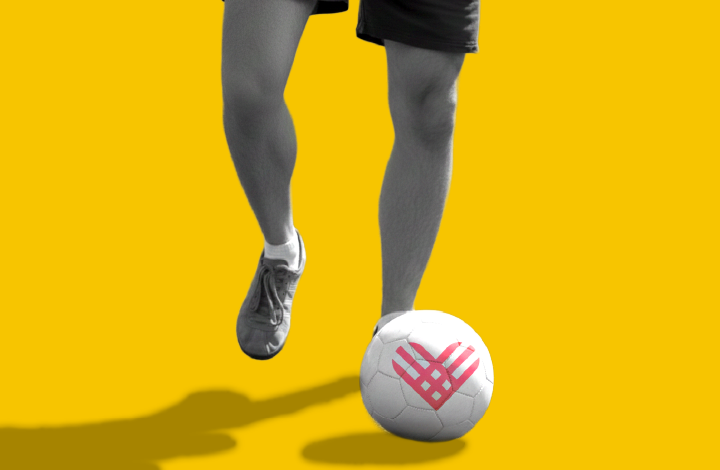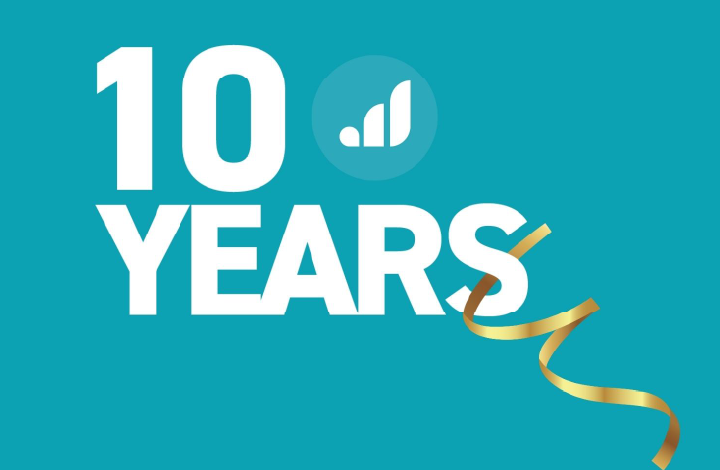A goodbye Q&A with Brooke Currence

On February 1, Give Lively bid a tearful farewell to Brooke Currence, our long-standing and much-beloved senior vice president of marketing and business development. As the first marketing lead at Give Lively, Brooke was there from the beginning and, over the course of more than eight years, was instrumental in growing us into the force for social impact we have become.
She will be missed, but we're excited to cheer her on as she achieves amazing things in her new role as co-founder of Real Good Strategy, a marketing and creative agency advancing social justice through evocative storytelling and partnerships.
Before she leaps fully into her new venture, I sat down with her one more time as a Give Lively colleague and friend.
Ethan Gelber: Let’s start at the beginning: How did you first get into nonprofit work?
Brooke Currence: I come from a pretty conservative, white background – Richmond, Virginia, then the University of Georgia for undergrad, where life was all about football and Greek life. Fun, but maybe not exactly a straight path to social change.
Social justice wasn’t on my radar until my early twenties, when I was working in big tech and started volunteering regularly at a homeless shelter in Atlanta, Georgia. Befriending the people there changed a lot for me. Their stories made me see how systems can be designed to keep certain groups down. It shifted the way I thought about what I wanted to do with my own future, and why the personal stories of those made invisible are so powerful.
I moved to NYC to figure out how to get out of the tech private sector and be part of something bigger – right as a couple of philanthropist funders were launching Give Lively. It was just an idea then, and they brought me in to work with our incredible CEO David DeParolesa and help turn it into something forceful from the ground up.
Ethan: You didn’t just join Give Lively. You built its reputation with nonprofits from nothing into the powerhouse it is today. What was that like?
Brooke: I mean – so exciting. It felt like a dream job, getting to intimately know the nonprofits working on causes I loved, from grassroots organizations like Brooklyn Bail Fund to established ones like Boys & Girls Clubs of America. We built something alongside them. It was also terrifying because these are the organizations on the front lines, facing life or death stakes, and we didn't have a playbook. I felt a massive responsibility to get it right.
In my eight years leading marketing and business development, we’ve slowly turned the hard-earned trust of our initial partner nonprofits, like the Malala Fund, into something massive, with over 50,000 nonprofits who have received funds through our platform and a team of 30+ people managing it. On December 31, a month before my last day, we had our biggest fundraising day ever – $13.7 million raised for nonprofits.
But what I’m most proud of is how we grew. We stuck to our progressive values and found ways to expand fundraising access in ways that nonprofits actually wanted.
Ethan: Another big part of that growth was cross-sector partnerships.
Brooke: Absolutely. To make fundraising even more accessible, we knew we had to think about strategic collaborations. We partnered in interesting ways with Charity Navigator to relaunch and power their Giving Basket and with Shift4 to lower processing fees for nonprofits.
Ethan: We’re talking in a moment where the nonprofit sector is under attack. How do you see this playing out?
Brooke: The nonprofit sector is going through a time of overwhelming and really scary change. We’re watching an overt effort to dismantle the public sector and replace basic public good with the private interests of the wealthiest few.
Ethan: Right. And we’re seeing it happen in real time.
Brooke: Exactly. But we know history. Oppressive systems can only operate through fear, isolation and silence. Organizations and leaders can’t afford to sit back now. This is the moment for them – for all of us! – to define who we are and what kind of future we're building.
Ethan: What do you think makes Give Lively different from other nonprofit tech companies?
Brooke: At Give Lively, we figured out how to scale while staying true to our values. Right from the beginning, we were clear about who we were; we were never out to serve just any organization raising money online. We still personally review every nonprofit member application for values alignment.
Ethan: And it worked. It wasn’t a risk – it's a strength.
Brooke: Exactly. That kind of clarity of identity builds a sense of trust and partnership that is more powerful than anything else.
Ethan: What’s the best nonprofit messaging or imagery you’ve seen?
Brooke: Oh wow. Thousands of nonprofits, eight years… I’ve worked with some great campaigns. But two still stand out.
The first is a throwback to Planned Parenthood of Greater New York’s campaign: DON'T F*CK WITH US, DON’T F*CK WITHOUT US. It launched after Trump was elected the first time. I remember how excited I was to walk by big hand-painted murals in the streets of New York City’s Lower East Side. It was thrilling to work on digital fundraising at Give Lively for that campaign.
Ethan: I remember that. It was provocative.
Brooke: Totally. It defined an “us” in a really exciting way. It made women feel powerful, defiant and in control. It turned fear and backlash on its head and replaced it with a feeling of excitement and the undeniability of our power, energizing messaging that makes people excited to belong to a cause. I really like leaning on humor and playfulness. It’s a powerful tool in the face of hate.
Ethan: What's the second example?
Brooke: It’s actually a portion of the Israeli separation barrier in the occupied West Bank where Palestinian street artists turned a literal tool of oppression into a canvas for resistance. When I visited there in 2023, one image surprised me: a massive portrait of George Floyd by the Palestinian artist Taqi Spateen.
That Black Lives Matter image, placed on that wall alongside images of Palestinian oppression, makes a striking statement: systemic racism and state violence aren’t just local issues; they’re a global struggle that connects us. That’s how movements use an image or message to shape how people can see themselves as part of their “us.”
Ethan: That brings us to what’s next for you. Why is now the time to launch Real Good Strategy?
Brooke: Because we are in a defining moment. Progressive nonprofits, leaders and all of us need smarter, bolder strategies and cross-sector alliances. It’s not enough to just "get the word out." You need the right messaging, the right partnerships and the right strategy to drive real action and re-shift the narrative of power.
That’s why I’ve launched Real Good Strategy full-time with my co-founder Aja Smith, an award-winning brand strategist. Together, we bring a unique combination of nonprofit insight and brand expertise to help organizations not just raise money, but position themselves for major cultural impact.
Right now, the stakes are really high. But I actually do believe that each of us has been chosen for this moment and the way forward isn’t small or quiet. It’s bold and we are ready.









.svg)
.svg)
.svg)
.svg)














